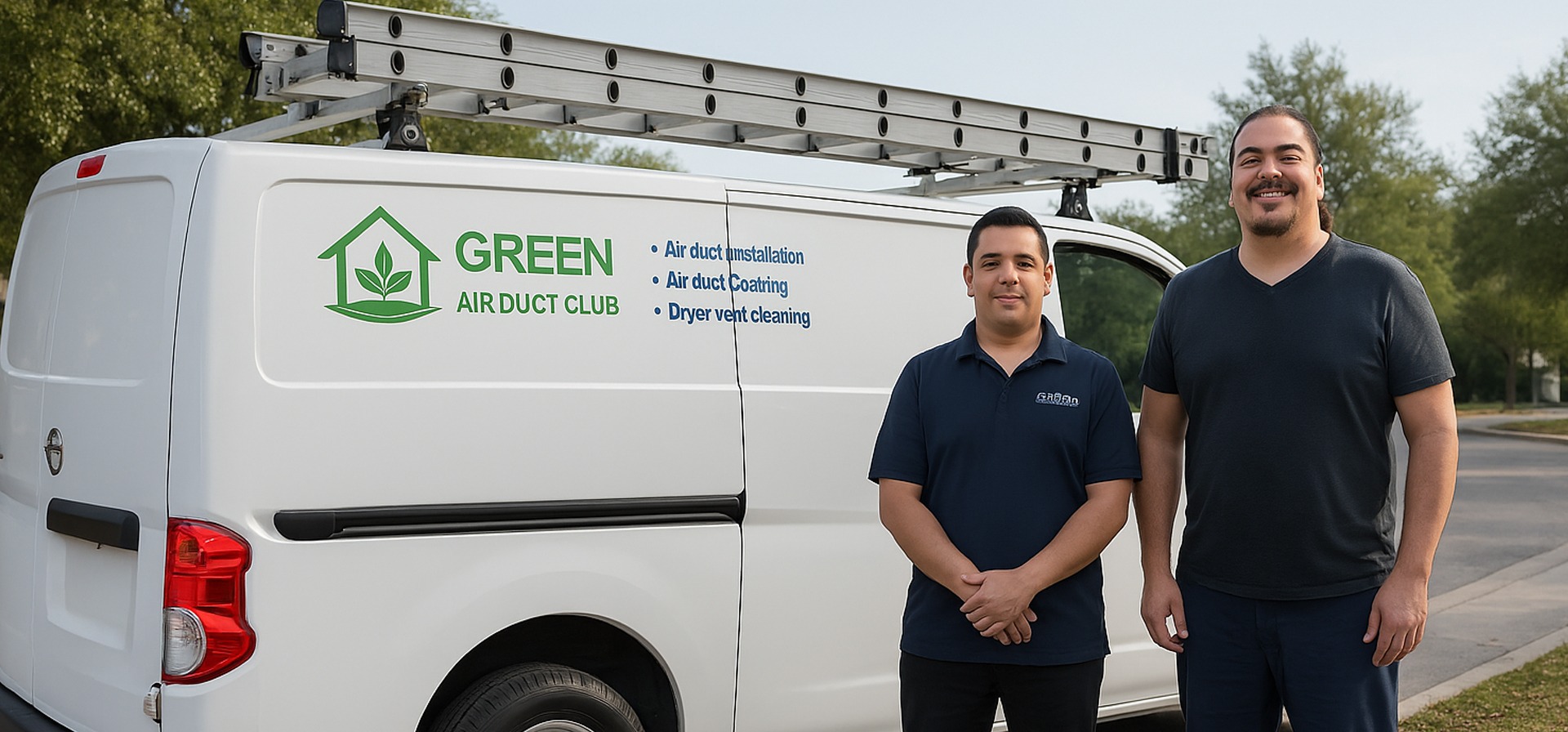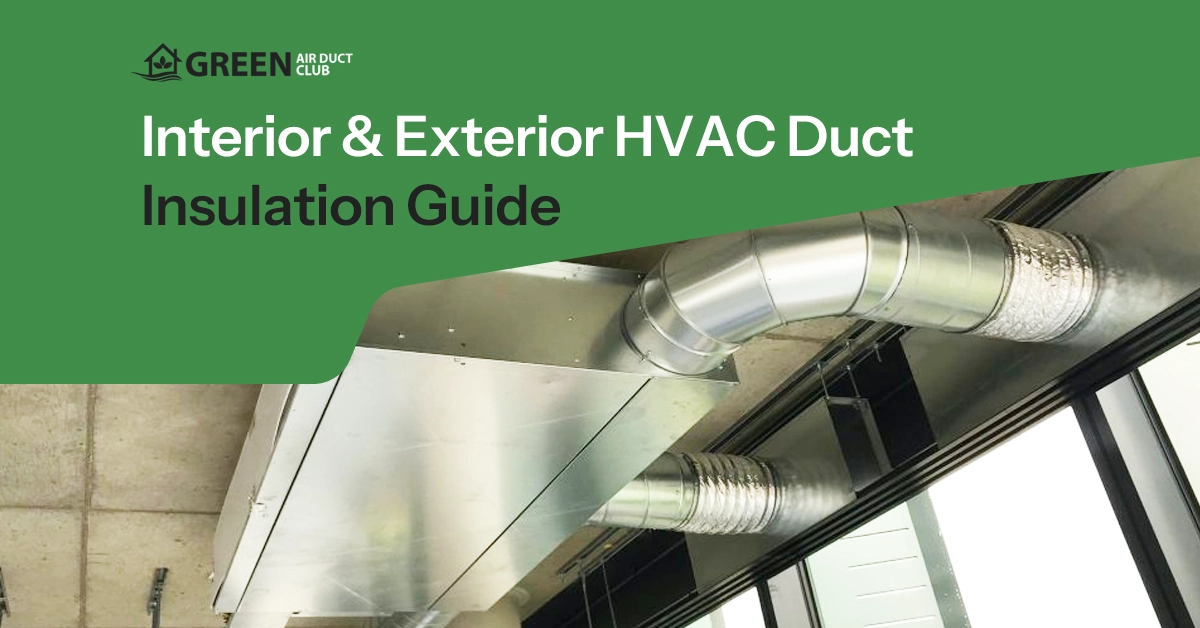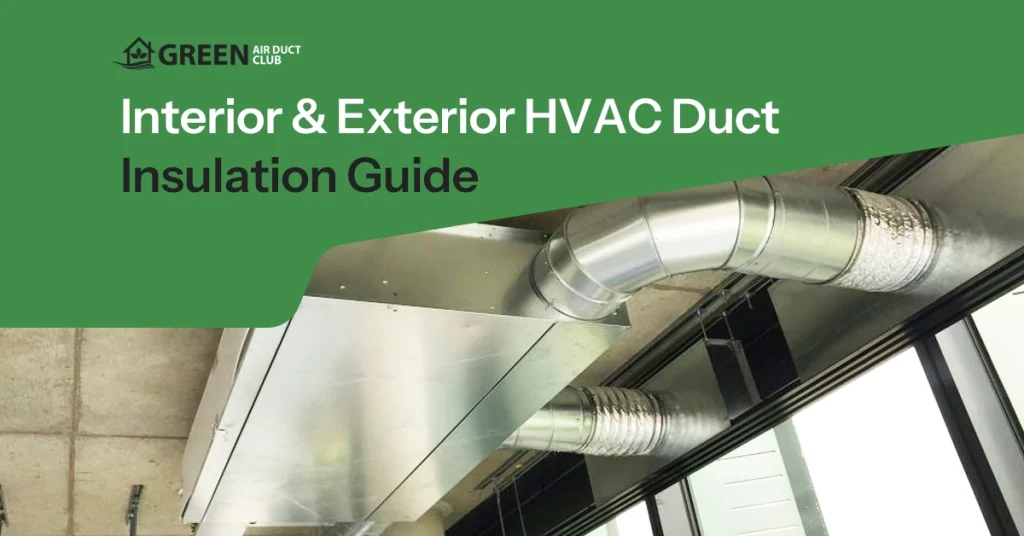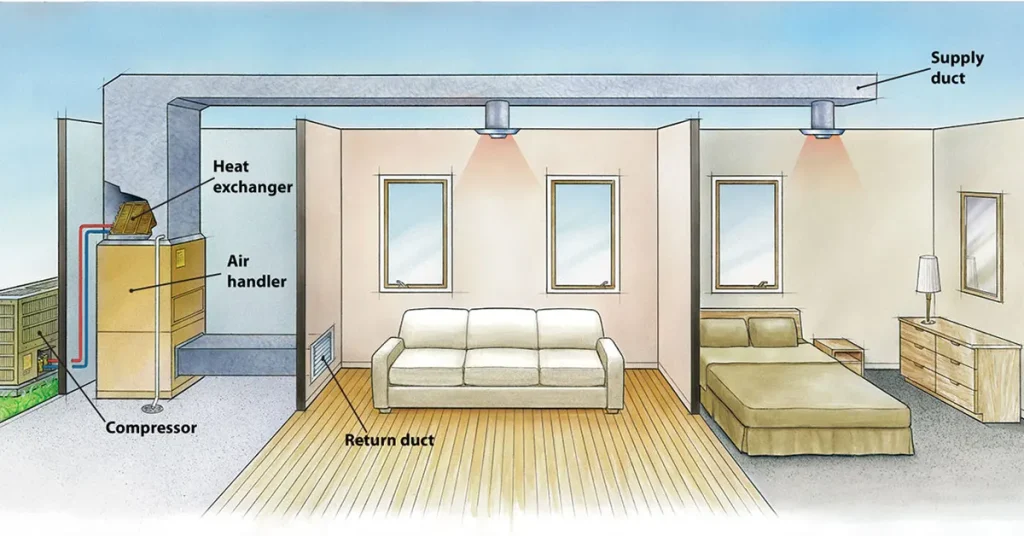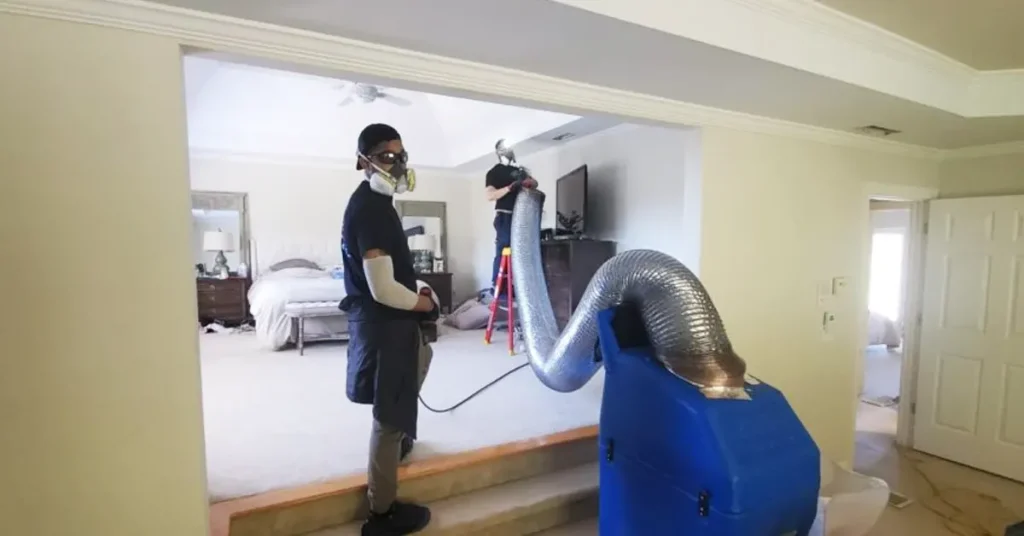Selecting the right duct insulation for your HVAC system can make a significant difference in your energy bills and home comfort. We see homeowners struggle with this choice all the time. Interior options work inside the ductwork, while exterior types wrap around the outside. Both have their place depending on where your ducts run and what your home needs.
The right duct insulation prevents air leaks, reduces noise, and keeps your system running smoothly for years. Climate, location, and your budget all play a role. Let’s break down everything you need to know to make the wise choice for your home’s heating and cooling system.
Understanding Interior vs. Exterior Duct Insulation
Here’s the deal with interior versus exterior options. Interior HAVC duct insulation goes inside your ducts and works great for reducing noise. It’s popular in commercial buildings where you want a clean look. The downside? Installation takes longer because you’re working inside tight spaces. It’s harder to inspect once it’s in place, too.
Exterior HVAC duct insulation wrapping, on the other hand, goes around your ductwork. This style works better for most homes, especially in attics and basements. You can install it faster and check it easily later. It also handles condensation better in unconditioned spaces. If your ducts run through hot attics or cold crawl spaces, exterior duct insulation prevents energy loss and keeps temperatures consistent throughout your home.
Choosing the Right HVAC Duct Insulation Materials
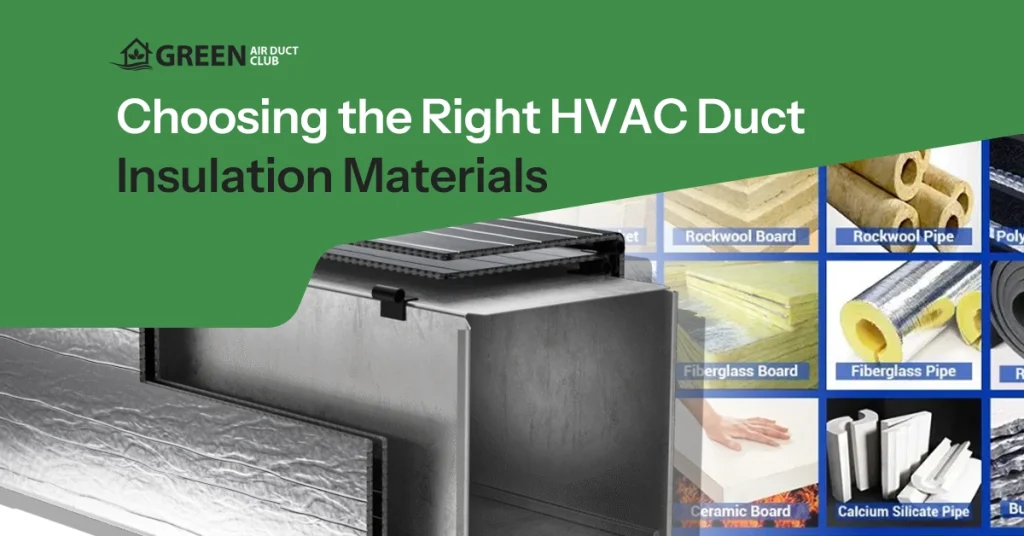
Material selection matters just as much as placement. Different duct insulation products offer different benefits. You need to match the material to your specific situation. Let’s look at what works best for various applications and why certain materials outperform others.
Fiberglass and Duct Board Solutions
Fiberglass remains the most popular duct insulation choice for a good reason. It’s affordable and provides solid thermal resistance. You’ll find it in batts or rolls that wrap easily around round or rectangular ducts. The R-value typically ranges from R-4 to R-8, which handles most residential needs.
Duct board takes things further. This rigid product serves as both the ductwork and the insulation layer. It’s pre-insulated, so you’re killing two birds with one stone. Installation goes faster because you’re not wrapping anything. The only catch? It costs more upfront, but many homeowners find the labor savings worth it when installing HVAC duct insulation.
Foil Faced and FSK Barrier Options
Foil-faced duct insulation products add a reflective layer that bounces heat away. This works exceptionally well in hot climates where cooling costs spike in summer. The shiny surface also acts as a vapor barrier, preventing moisture problems that can ruin standard insulation over time.
FSK stands for foil-scrim-kraft, and it’s a triple-layer system. The scrim reinforcement makes it more durable than basic foil. You get better tear resistance, which matters during installation and for long-term performance. This type handles mechanical rooms and other rough environments where durability counts.
ASJ Wrapping and Corrosion Protection

ASJ (all-service jacket) brings extra toughness to the table. It combines aluminum foil with a fiber backing. This combination resists punctures better than standard options. If your ducts run in areas where they might get bumped or scraped, ASJ makes sense.
The corrosion-resistant properties help in damp environments, too. Basements, crawl spaces, and outdoor applications all benefit from quality duct insulation. Some ASJ products include antimicrobial treatments that fight mold and bacterial growth. This keeps your air quality high and extends the system’s lifespan significantly.
Outdoor Installation for Maximum Efficiency
Outdoor ductwork faces harsh conditions. Sun, rain, and temperature swings all take their toll. Regular HVAC duct insulation won’t cut it out here. You need products designed specifically for exterior use with UV-resistant jackets. These specialty wraps handle weather without breaking down.
Wind can steal heat right through poorly insulated outdoor ducts. Proper duct insulation covering stops this energy theft and keeps your system working efficiently. Make sure seams are sealed tight and joints overlap correctly. Any gaps let moisture in, and that’s when problems start. We always recommend an extra layer of protection for outdoor runs compared to what you’d use inside.
Proper Ductwork Techniques
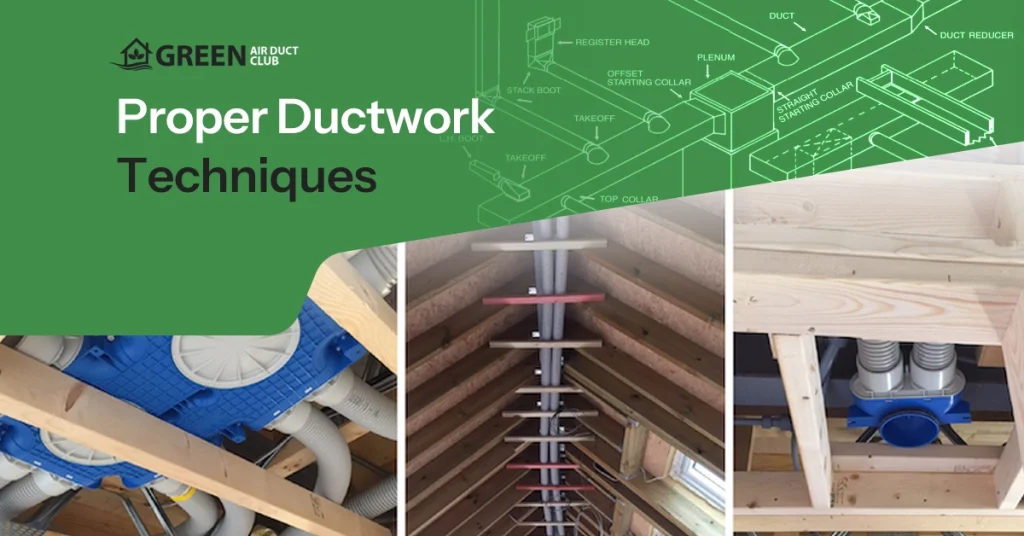
Getting the duct insulation installation right makes or breaks the whole project. Start by cleaning your ducts thoroughly. Dirt and debris prevent good adhesion. Measure twice and cut once – this old saying really applies here. You want snug fits without gaps.
Secure everything properly. Use the right tape or mastic designed for HVAC applications. Regular duct tape (ironically) doesn’t work well for actual ducts. It dries out and fails. Here’s what you need to do right:
- Clean all surfaces before applying it
- Seal all seams with proper mastic or aluminum tape
- Check for compression that reduces the R-value
- Inspect it regularly for damage or moisture
- Replace worn sections promptly
Pay attention to corners and joints. These spots tend to lose the most energy if not handled correctly. Take your time and do it right the first time.
Insulating AC Lines and Water Pipes
Don’t forget about your AC refrigerant lines and water pipes. These need protection too. Pipe insulation prevents condensation on cold lines and heat loss on hot ones. The same duct insulation principles apply, but you’ll use different dimension products sized for pipes.
AC lines sweat heavily in humid weather. Without proper covering, that moisture drips everywhere and can cause damage. Water pipes benefit too, especially in crawl spaces where freezing becomes a concern. A little insulation goes a long way toward preventing burst pipes in winter
Why Quality Duct Insulation Protects Your System
Investing in quality duct insulation materials pays off over time. Good coverage lowers your energy bills month after month. Your HVAC system doesn’t work as hard, so it lasts longer. You’ll also notice better air quality because properly sealed ducts don’t pull in dust and allergens from attics or crawl spaces.
Think of it as a warranty on your comfort and your wallet. Cheap materials might save money today, but cost you more tomorrow. They compress, absorb moisture, and fail faster. Quality products maintain their R-value for decades. Your filter stays cleaner, too, because well-insulated systems circulate air more effectively and prevent particle infiltration.
Trustindex verifies that the original source of the review is Google. Ori & his assistant took before and after videos and thoroughly explained what needed to be cleaned. Did a great job—house vents smell clean now that bacteria has been removed!Posted onTrustindex verifies that the original source of the review is Google. Great efficient service!Posted onTrustindex verifies that the original source of the review is Google. Ori and his team did a great job identifying bacteria and cleaning it for me, as well as providing a solution to help with prevention. I appreciate him and his team!Posted onTrustindex verifies that the original source of the review is Google. Thank you Green Air Duct Club. You where on time and very through. Oren presented me with before and after photos that where a great help understanding what needed to be done. Thank you for great service and price. We are very Happy!Posted onTrustindex verifies that the original source of the review is Google. I was very impressed with the clarity and efficiency of the cleaning process; the professionals explained every detail and executed the work with great precision, leaving my home completely worry free.Posted onTrustindex verifies that the original source of the review is Google. I appreciated the transparent, clear communication from the team, who meticulously cleaned every vent and provided updates that made the entire air duct cleaning process completely worry free.Posted onTrustindex verifies that the original source of the review is Google. AhabahabbaPosted onTrustindex verifies that the original source of the review is Google. Green Air Duct did a wonderful job - cleaning and disinfect our air ducts and A/C unit. Ori was honest and up front about what we needed - and didn’t need. We had them look at the insulation in the attic as well, and despite aging and based on our electrical bill, explained that it was probably not necessary. Attached are before and after of inside of duct box.Verified by TrustindexTrustindex verified badge is the Universal Symbol of Trust. Only the greatest companies can get the verified badge who has a review score above 4.5, based on customer reviews over the past 12 months. Read more
Frequently Asked Questions
Q: How thick should my duct insulation be?
Most residential applications need R-6 to R-8 insulation, which translates to about 1.5 to 2 inches thick. Colder climates require R-8 or higher. Attics and unconditioned spaces need thicker insulation than ducts in conditioned areas. Check your local building codes for minimum requirements.
Q: Can I install duct insulation myself, or should I hire a pro?
Basic exterior wrapping is manageable for handy homeowners with the right tools. You’ll need sharp knives, measuring tape, and appropriate fasteners. Interior installation or complex systems really should be left to professionals. They have specialized equipment and know how to maintain proper airflow while insulating.
Q: How do I know if my current duct insulation needs replacement?
Look for visible damage like tears, compression, or water stains. If your energy bills keep climbing or some rooms stay uncomfortable, that’s a red flag. Musty smells indicate mold growth on wet insulation. Generally, insulation lasts 15-20 years but can fail earlier in harsh conditions.
Q: What's the difference between R-value and thickness?
R-value measures thermal resistance – higher numbers mean better insulation. Thickness affects R-value, but different materials provide different R-values at the same thickness. Foam products typically offer higher R-values in thinner layers than fiberglass. Always check the R-value rating, not just how thick something looks.
Q: Does duct insulation really reduce noise?
Yes, especially interior products designed for sound dampening. Exterior insulation helps too by reducing vibration transmission. Fiberglass works better for noise reduction than foam boards. If noise is your primary concern, look for products with high Sound Transmission Class (STC) ratings.
Q: How do I prevent condensation on insulated ducts?
Use products with built-in vapor barriers facing outward. Seal all seams completely so humid air can’t reach cold duct surfaces. Make sure insulation isn’t compressed, which reduces effectiveness. In very humid climates, you might need additional dehumidification to keep condensation under control.

